
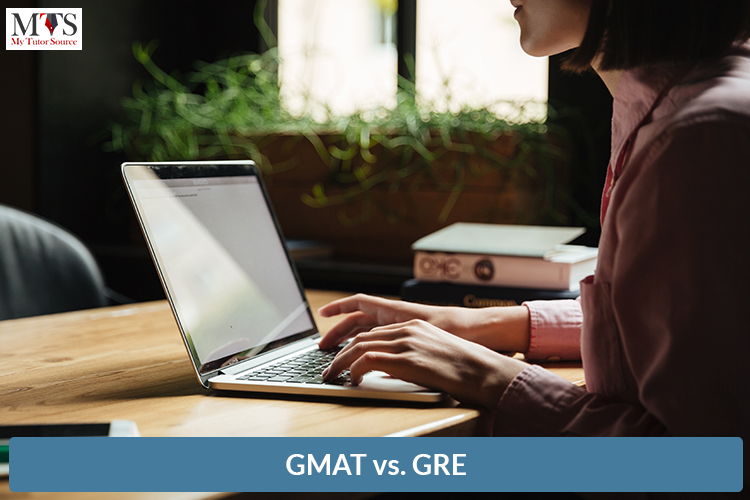
To get admission into the best business school and study MBA or other business-related programs, one must take GMAT or GRE. Some universities might give you the option to provide GMAT or GRE, but how would you know which one showcases your skills more? Nowadays, some business schools prefer GRE over GMAT.
You might be confused or debating between taking the GMAT and GRE or both. GRE is for the business and law schools, while GMAT is for business schools only. That’s it.
What if your targeted business schools give you the flexibility of picking any test of your choice? Would you take the GMAT or the GRE? Let us help you choose one! In this comprehensive GMAT vs. GRE guide, we have provided all the necessary details to figure out which test is best for you. Give it a read and without wasting any more time, register yourself and land a seat at your desired business school.
GMAT’s full form is Graduate Management Admission Test, and the GMAC, the Graduate Management Admission Council, administers it. It is an entrance exam primarily used to get admission into MBA programs. It is taken to measure the applicant’s reasoning, problem-solving, and critical thinking and evaluate whether they are suitable for specific programs and schools or not.
Over 2,300 business universities accept GMAT scores as it fills the requirement of 7,000 and more business programs. It is accepted widely as 110+ countries arrange the GMAT exam. It is an online computerized test, taken at testing centers.
Attaching a GMAT score report with the admission documents makes your admission application strong and shows your abilities, commitment, passion, and motivation for the business programs. Moreover, business schools prefer applications with the GMAT exam score report.
The GMAT is structured into four sections:
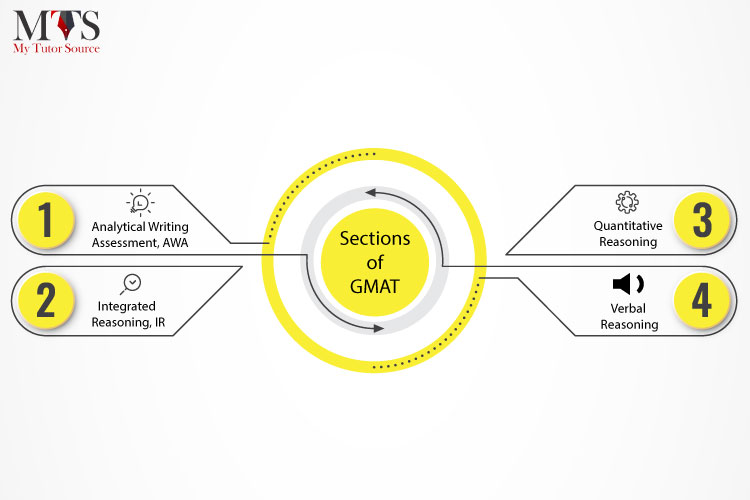
This part of the GMAT exam is taken to measure your critical thinking and writing abilities and how well you can express or deliver your ideas. It is more like an analysis of arguments. Analytical Writing Assessment of the GMAT contains one question only.
The business programs contain table analysis, multi-source reasoning, graphics interpretation, two-part analysis, and similar questions. That’s why the Integrated Reasoning section of the GMAT exam is to test how well you evaluate information or analyze data given in multiple formats. This section has 12 questions in total.
The Quantitative Reasoning section of the GMAT exam tests your reasoning skills through 31 questions. Its question types are problem-solving and data sufficiency. They test your ability to analyze data and then draw conclusions.
This part of the GMAT exam is designed to measure your standard English proficiency. It has 36 questions in total, and they are in critical reasoning, reading comprehension, and sentence correction format. Your score or points in the Verbal Reasoning sections demonstrates how well you read, understand and evaluate a written argument or material.
The GMAT is a 3 hours and 30 minutes long test, and each section has a different time. Give a glance at the table below to know the timings of GMAT:
| Sections | Number of Questions | Allotted Time |
| Analytical Writing Assessment | 1 question | 30 minutes |
| Integrated Reasoning | 12 questions | 30 minutes |
| Quantitative Reasoning | 31 questions | 62 minutes |
| Verbal Reasoning | 36 questions | 65 minutes |
That’s the timeframe of the GMAT exam, and you can take an 8 minutes break optionally. Moreover, the GMAT gives you the flexibility of choosing your exam section’s order. For example, you can attempt any section before or later.
The total score of the GMAT is between 200 – 800, as all four sections’ score varies. Your strength and performance in all sections matter, and it will affect your total score too. The GMAT has a penalty for leaving questions unanswered, and your total scores are reported in intervals of 10.
| GMAT Sections | Scoring Scales |
| Analytical Writing Assessment | 0 – 6 |
| Integrated Reasoning | 1 – 8 |
| Quantitative Reasoning | 0 – 60 |
| Verbal Reasoning | 0 – 60 |
| Total Score (Combined) | 200 – 800 |
The highest score on the GMAT exam is at the 90th percentile, 710 numbers. Moreover, the validity of the GMAT score is five years.
The GMAT does not give you the flexibility of skipping, going back, or changing your answers to questions while attempting the exam. It is a computer-adaptive test, and the complexity of the next question depends on your answer to the current question you are solving. In simple words, if you do not attempt the first question of the Quantitative and Verbal Reasoning sections correctly, the computer will automatically give you an easy question next. Similarly, if you answer correctly, the next question will be a harder one. And this is how the computer will evaluate your ability and skills on a subject. This feature is to test your potential and readiness for a high-level degree. The process of easy and hard questions will continue throughout the sections of both Quantitative and Verbal reasoning.
The GRE stands for Graduate Record Examination, and the Educational Testing Service (ETS) administers it. GRE is an entrance exam mainly used to get admission into the business and law programs. It is taken to measure the applicants’ analytical writing, critical thinking, verbal and quantitative reasoning, problem-solving, and critical thinking skills.
Over 1,300 business and law universities accept GRE scores, and it is accepted and preferred globally. The format of GRE is computerized, and you are allowed to use an on-screen calculator only for calculation purposes.
Attaching a GRE score report with the admission documents increases the chances of getting admission to your desired school and program. The score report of the GRE shows the preparedness of applicants for high-level academic programs.
The GRE is divided into three sections:
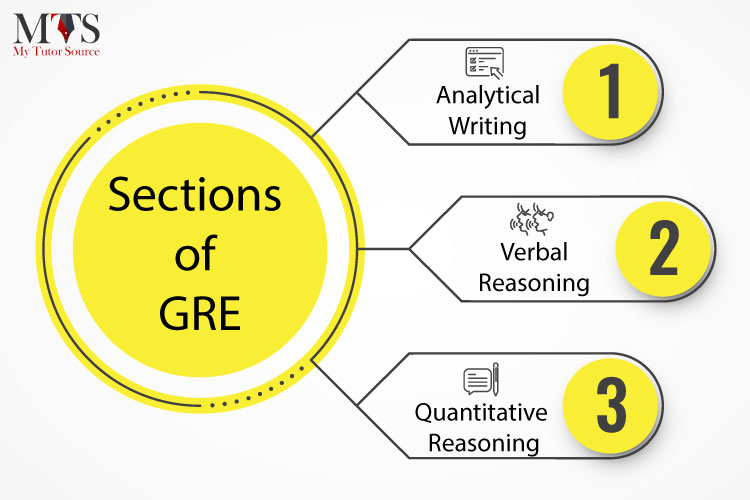
The Analytical Writing section of the GRE is further divided into two tasks: analyze an issue task and analyze an argument task. This section tests critical, argumentative writing skills and measures how well you can express your ideas, evaluate a given argument, and share your constructive response.
This part of the GRE measures your ability in reading comprehensions, sentence equivalence, and text completion. If you have good command and knowledge of vocabulary and sentence making. All 20 questions of the Verbal Reasoning sections test your understanding of sentences, the author’s assumptions, the structure of texts, and the meaning of words. In short, your command and proficiency in the English language will be tested in this section of the GRE.
The Quantitative Reasoning section of GRE measures your logical, mathematical, and problem-solving skills. This section includes 20 questions, and they are designed to test your elementary and basic concepts of data analysis, algebra, geometry, arithmetic, and how well you can understand and analyze quantitative information.
The timing of the GRE is 3 hours and 45 minutes, and each section has a different time. Give a glance at the table below to know the timings of GRE:
| Sections | Number of Questions | Allotted Time |
| Analytical Writing | 2 tasks | 30 minutes per task |
| Verbal Reasoning (2 sections) | 20 questions per section | 30 minutes per section |
| Quantitative Reasoning (2 sections) | 20 questions per section | 35 minutes per section |
That’s the timeframe of the GRE with a break of 10 minutes only. Moreover, the test design features of GRE are quite flexible as they allow you to change, edit, mark, review, or preview your answers and sections.
The GRE score is calculated as:
| GRE Sections | Scoring Scales |
| Analytical Writing | 0 – 6 |
| Verbal Reasoning | 130 – 170 |
| Quantitative Reasoning | 130 – 170 |
| Total Score (Combined) | 340 + 6 |
Attaining a good score in all sections proves your preparedness or readiness for studying the high-level academic platforms. It is not compulsory for some universities to submit the score of all sections of the GRE as not all programs prefer all sections. For example, if you are applying for an engineering program, your Quantitative section score matters a lot.
It’s like comparing apples and oranges. GRE and GMAT are very different exams. GMAT has conventionally been used for applying to B-schools, whereas GRE is the preferred choice for MS programs. While many B-schools, primarily in the US, have now started accepting GRE scores for MBA programs, one needs a different type of aptitude to score high in either of the two exams.
Hence, calling any of the two ‘better’ or ‘easier’ than the other is a misnomer. Perhaps a simpler way to understand this is through the distinction that if you’re an MBA aspirant with a ‘traditional’ profile, in that you have some experience in the conventional industries such as Banking or Consulting, then GMAT is a more suitable exam for you. On the other hand, if you’re interested in cinema studies or have experience in a similar but atypical industry, you might fare better in GRE.
Also, if you take the GRE and then apply for an MBA program, you must have a pretty good reason to justify this to the ad com as they will wonder why you took the GRE and not the GMAT. If you want to do an MBA, this may reflect on your decision-making skills if this reason does not come out clearly through your application package.
Another note of caution: If you’re under the impression that you’ll find the GRE easier if you’re better in English than in Math, you’re mistaken. The GRE English is not that easy, and many of those who otherwise have a good command over the language falters in the GRE English!
Alina Clark, Co-Founder at CocoDoc
One of the primary differences between the GMAT and GRE is their total cost. The cost of the GRE is $205, and GMAT is $250 for business schools. However, the cost of GMAT varies from $275 to $300 in parts of North America and Europe.
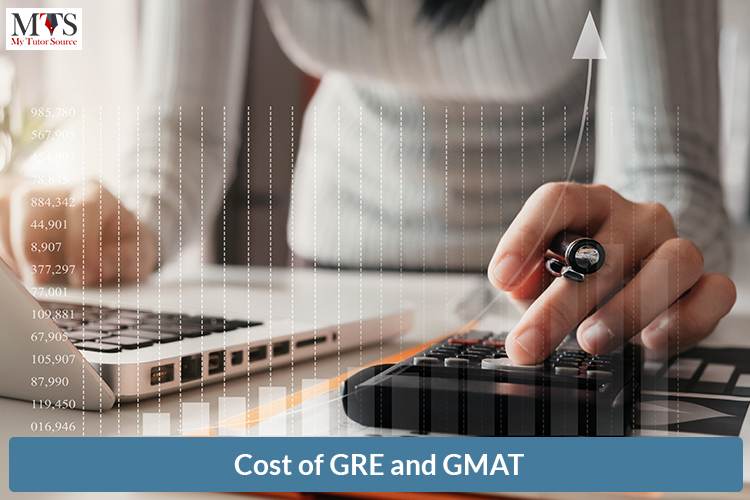
The timings of the test are another difference between the GRE and GMAT. The GRE is 3 hours 45 minutes, and GMAT is 3 hours 30 minutes excluding check-in time.
The administrators of both tests take tests in testing centers globally throughout the year, as both are computer-based tests. Places where computer-based testing centers facility is not available to offer paper-based GRE three times a year only.

The GRE allot more time than GMAT, but the test sections of the GMAT are more than the GRE. Have a closer glance at sections of both tests:
| Sections | GMAT | GRE |
| Number of Sections | 04 | 03 |
| Name of Sections | Analytical Writing Assessment Integrated Reasoning Verbal Reasoning Quantitative Reasoning | Analytical Writing Verbal Reasoning Quantitative Reasoning |
The Integrated Reasoning Section is additional as it also tests your quantitative skills along with interpretation skills.
The business schools might accept both the GMAT and GRE score reports, but the comparison of both tests’ scoring scales is a bit difficult as both scoring systems are entirely different.
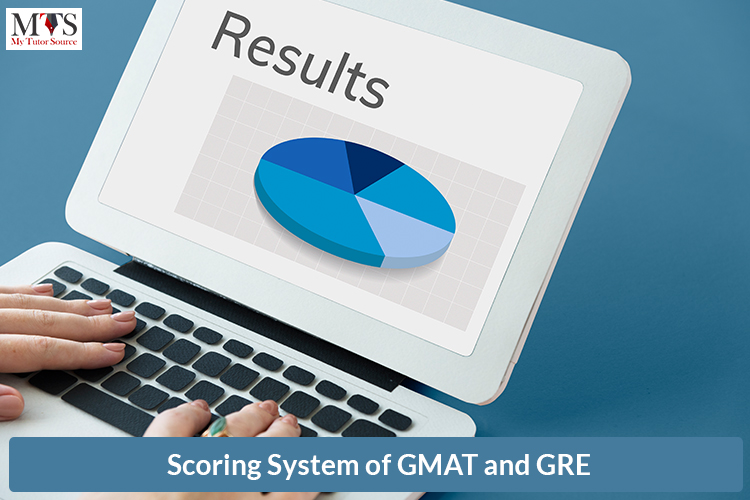
The GRE lets you skip or attempt questions wrong but the GMAT has a penalty on wrong answers. You must take more practice tests to know how the scoring system works and what would be your total score if you skip or mark incorrect answers.
Both GRE and GMAT have Analytical Writing Assessment sections to measure your written ability and analyze how well you can state an argument or issue. The timings of the writing section for both are different, but the difficulty level, length are fairly equal. The GMAT gives you a 30 minutes ‘analysis of argument’ task to evaluate your analytical and argumentative skills. On the other hand, you will be allotted 60 minutes to write on ‘analyze an issue’ and ‘analyze an argument’ tasks.
In the GMAT Analytical Writing section, you have to discuss the given issue or opinion, and after evaluating its strengths and weaknesses, you have to share how it could be improved. While in GRE, one essay task is similar to the GMAT. Therefore, the second task asks for your stance and its justifications with evidence.
The questions of the verbal reasoning section of GMAT are in three types: Reading Comprehension, Critical Reading and Sentence Correction. All questions test your analyzing an argument skill, reading ability, grammar, standard English command and communication skills. This section also checks how well you can identify and correct written passages or material errors in 41 questions.
On the other side, the Verbal Reasoning section also measures the same skill set as the GMAT. The questions are also divided into reading comprehension, Text Completion, critical reasoning, and Sentence Equivalence. The GRE Verbal section has two parts, and each part contains 20 questions.

The quantitative sections of both tests test your mathematical skills, but the type of questions differ. GMAT quant questions include problem-solving and data sufficiency problems. The questions are generally technical and demand more critical thinking and analysis.
On the contrary, GRE quant questions test your Algebra, Arithmetic, Geometry and Data Analysis knowledge. The GRE questions are easy and straightforward. Most of them are in multiple-choice or numeric entry format.
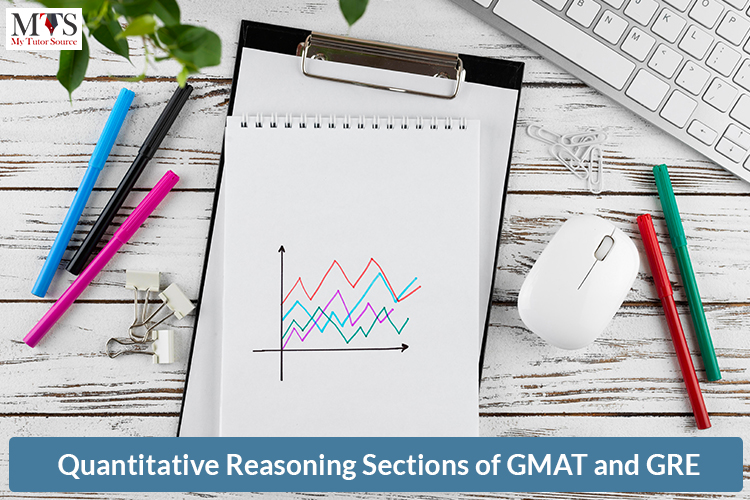
One of the key differences between GMAT and GRE is that GRE does not have an Integrated Reasoning section. It tests your quantitative, mathematical, data analysis skills and how well you can solve complex problems. IR sections questions are in four types: Two-part analysis, Table analysis, Graphics interpretation and Multi-source reasoning.
If you are good at IR, then go for the GMAT test. It’s another way of making a decision or picking one test. You can also take the help of private tutors and solve practice tests for performing well and attaining the desired score.

The following chart is the quick overview of the comparison between GMAT vs. GRE:
| Categories | GMAT | GRE |
| Time Allowed | 3 hours & 30 minutes | 3 hours & 45 minutes |
| Total Sections | 4 | 3 |
| Name of Sections | Analytical Writing Assessment Integrated Reasoning Verbal Reasoning Quantitative Reasoning | Analytical Writing Verbal Reasoning Quantitative Reasoning |
| Total Essays | 1 | 2 |
| Total Multiple-Choice Questions | 90 | 80 |
| Score Range | 200 – 800 | 260 – 340 |
| Test Format | Computer-based (Computer Adaptive Test, CAT) | Computer-based (Multi – Stage Test, MST) |
| Test Fee | $ 250 USD | $ 205 USD |
| Test Dates | Year-round | Year-round |
| Score Validity | 5 Years | 5 Years |
Besides differences, both tests have a lot in common too, like:
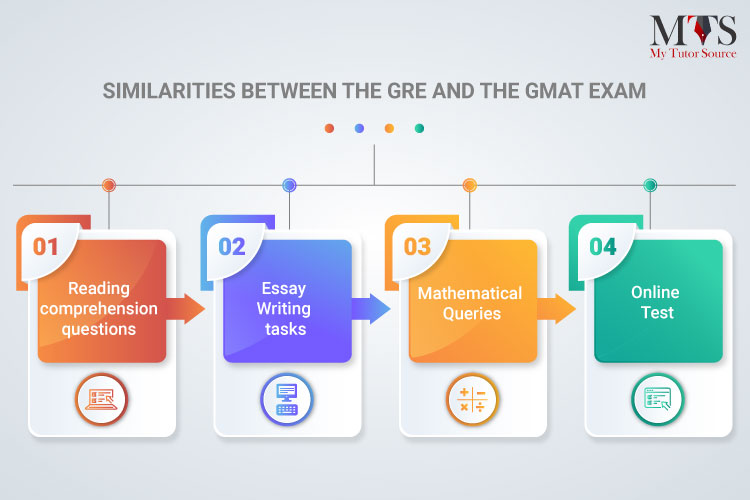
Be clear about your strengths, weaknesses and career goals first. Check what your targeted graduate school demands, GMAT or the GRE? If they give you a choice, select the one which matches your skillset. For example, the GMAT has an IR section; if you are confident about solving it correctly, then the decision is easy to make.Test Duration of GMAT and GRE
Yes, you can. You can take both the GRE and GMAT five times in 12 months or 365 days. Also, you can cancel your exam registration anytime; however, the charges may apply.
It depends. But the time period of six months is recommended to prepare for both of the exams. If you are learning from a private GRE tutor, then ensure your preparation time starts 4 to 6 months before the exam day.
The preparation will get you a better score. Whether you are taking the GMAT or GRE, nothing can stop you from achieving your goal if you are fully prepared. However, the scoring system of GMAT is complicated than GRE, and you should go for GRE if you can!
Both tests are accepted globally. However, GRE is taken more. Academic platforms that offer business and other programs prefer GRE. While some business schools convert GRE scores to GMAT scaled scores for choosing the right students for their graduate programs. Moreover, the GMAT format is designed to assure your clarity and goals of joining and pursuing a business graduate program.
Schools with only business programs prefer GMAT over the GRE.
Take as many practice tests as you can. Make a study plan and learn from expert private or online tutors. The official sites of both tests have practice material and guidelines for acing the exam. You can also enroll in a tutoring platform where GRE and GMAT trainers guide you.
Both tests, the GMAT and the GRE are for landing in a business school of your choice. Learn from experts, get into the details of everything and give practice tests more often. Don’t give up if you fail to attain the targeted score in the first attempt. You can retake both exams five times a year.
Discover everything you should know about GRE and the GMAT, check out their practice materials, get familiar with their scoring and registration policies. List down your academic goals, strengths, weaknesses and career goals. Figure out your target school requirements and then apply.
Know that schools offering business programs prefer the GMAT because performing well in its Writing, Verbal, Quantitative and Integrated Reasoning sections shows your preparedness for the business program. However, GRE is accepted for both law and business schools. The sections of both tests are slightly easier or challenging than each other. Review all the details and information before making your final decision.
Lastly, don’t rely on your GRE or GMAT scores only. Graduate schools also consider your academic background and score, personal statement, motivational letters and letters of recommendation for admission. Whatever you choose between the GRE and GMAT, learn everything by heart, practice hard, and study from the experts.